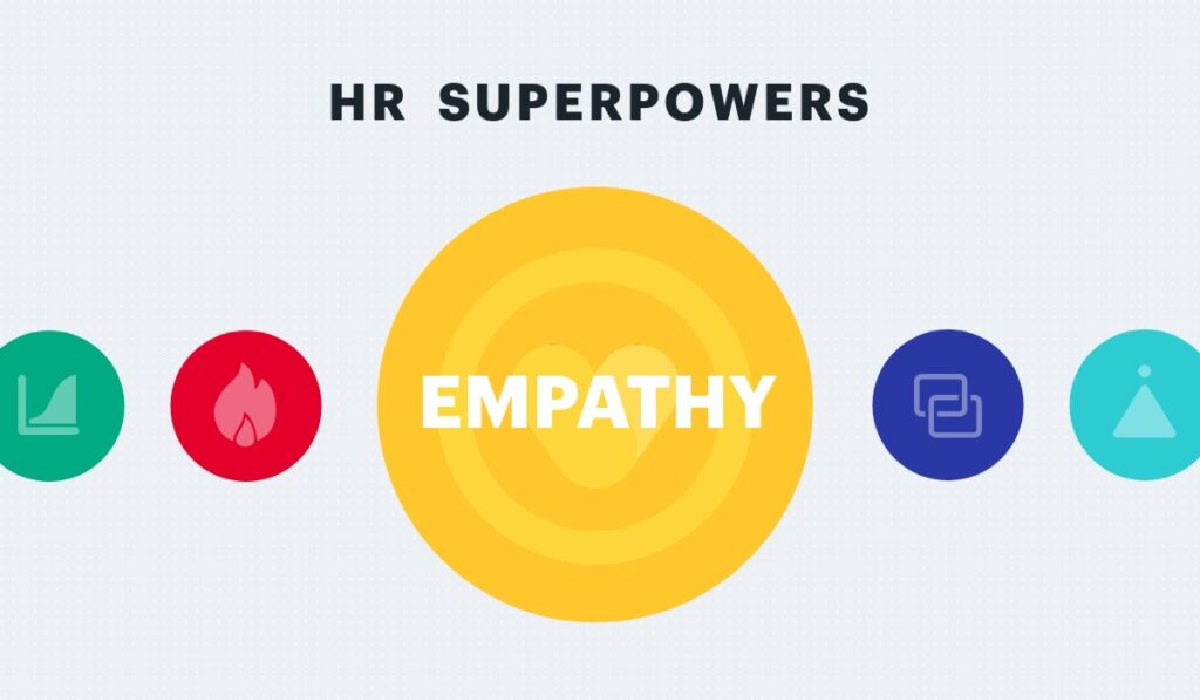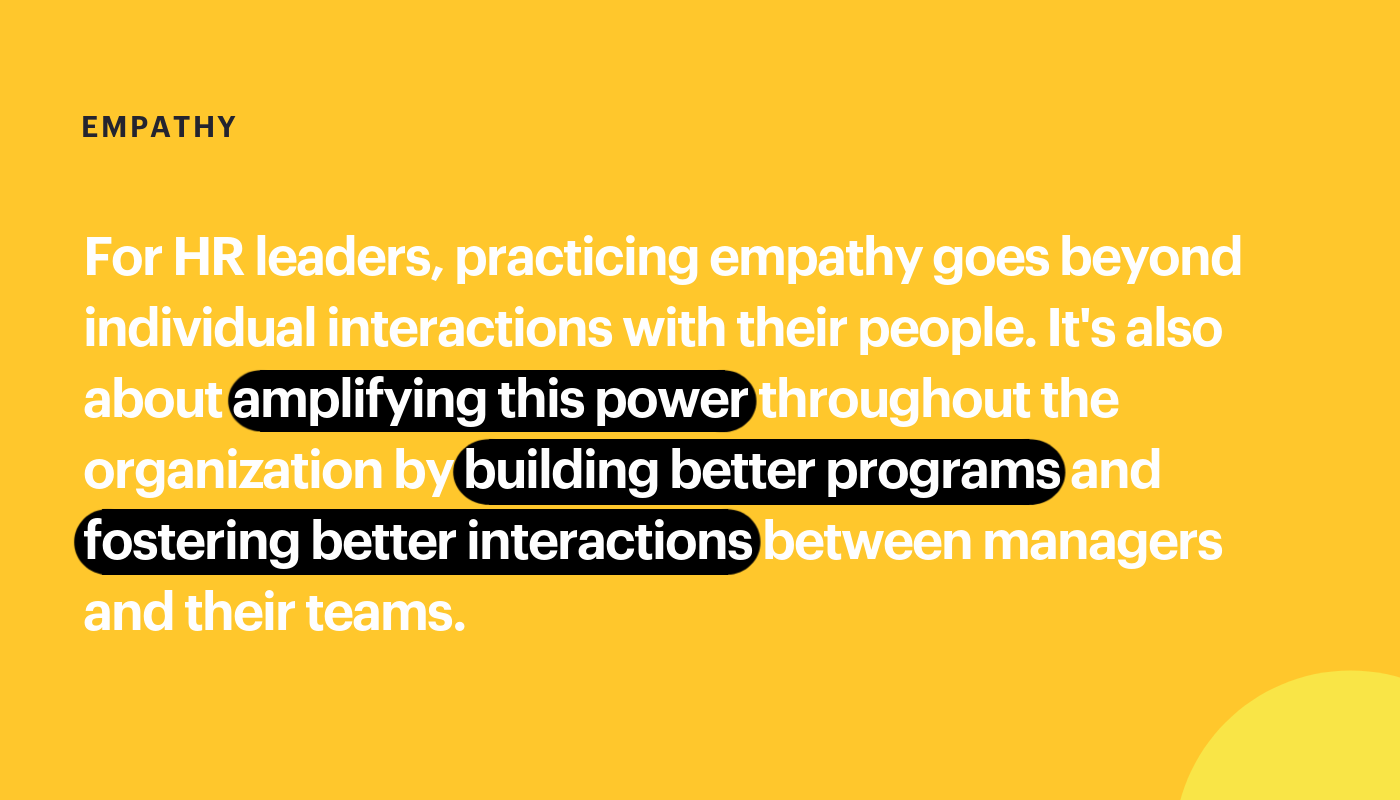Why HR Empathy is a Superpower
HR empathy is a superpower that can be amplified with data. Learn three tips for how to practice HR empathy to build a thriving workplace.

Through our stormiest days, effective HR leaders have empathy, courage, strategy, vision, and connection. We highlight one of these superpowers below, and you can learn about the rest in the summary article: Top 5 Superpowers of Effective HR Leaders. You can also discover which superpower is yours by taking this short quiz—don’t forget to share your results on social media after!

“I need support.”
It’s a phrase that many HR leaders encountered as the effects of the pandemic reverberated through workplaces around the world. And it’s a phrase that also became familiar to David Shontz, Head of Workforce Analytics & Organization Management at Nokia, when he sent out pulse surveys to their employees and managers located in 120 countries.
“We asked on an individual level: ‘How are you coping? How is the team coping? And how is the disruption in work?’ The answers ran the gamut from ‘I’m coping well’ to ‘I need support,’” he explains in a Visier forum near the start of the pandemic. When surveying managers specifically, David learned that 70% of them wanted to know how to keep their teams engaged, how to continue to show support, and how to remain positive. Using these surveys, plus cleverly leveraging data—“We created real-time data visualizations that leadership and employees could access to see daily changes around the world”—helped David and his collaborators at Nokia to craft an informed response, meeting the needs of their people.

eBay’s Scott Judd took the HR Superpowers Quiz and discovered that his is Empathy. Watch this short (1:11) video to find out what that means to him.
This kind of approach was adopted by many other organizations as employees started facing a multitude of challenges: Some people worried about job security and when things would “return to normal,” while others found themselves grieving for loved ones who died of COVID-19. Others were juggling school closures and kids at home. And as social injustices came into the spotlight, many employees suffered from racial trauma.
According to HR thought leader Josh Bersin, a focus on employee needs during a crisis is paramount. “The real point is that people are scared, and as a result, we have to create a sense of trust, shared responsibility, and safety,” he wrote in a piece published days after the pandemic was declared.
When life is anything but normal, organizations can maintain resilience by making mental health a priority. This is why we identified empathy as one of the top five HR superpowers that helped carry organizations through the challenges of the past several months.
With the power of empathy, HR leaders can determine who needs help and how best to provide support. An empathetic HR leader:
Forges emotional connections
Senses challenges
Identifies opportunities for change
Takes action that is rooted in acknowledgment
Want to know what trait you identify most with? Take our short quiz to find out what makes you a superpowered HR pro!
3 tips for practicing HR empathy using data
Even as the health crisis fades into the background and employers prepare for a post-pandemic reality, empathetic people leaders will continue to be the glue that holds organizations together.
Deloitte research into past crises reveals that “once the public health and economic crises have subsided, the human crisis can endure for months, if not years, to come.” At the same time, the pandemic eased the stigma around discussing mental health in the workplace, driving up expectations for what employers should do to help. As one expert told SHRM in this article about post-pandemic mental health: “This may just be the beginning of greater demand for mental health care and support in the workplace.”
For HR leaders, practicing empathy goes beyond the individual interactions they have with their people. It’s also about amplifying this power throughout the organization by building better programs and fostering better interactions between managers and their teams. This is where data can be a great benefit.

Here are three tips for using data to bolster empathy, one of HR’s most important superpowers:
1. Listen first
Compassion is rooted in understanding, and there are many ways organizations can solicit real-time feedback from employees effectively. With pulse surveys, leaders can not only take the time to ask if people personally need help, they can offer resources in-survey. The aggregate data on the challenges that employees are facing can also be used to help people managers build empathy.
It’s important to address what seem to be even minor emotional challenges–less serious mental health issues, like ��“languishing,” can have an impact on an employee’s ability to thrive in the workplace. Interventions can range from providing extra days off to giving access to video counseling or text therapy with a licensed clinician–and the type of intervention required depends on the seriousness of the issue.
The key is to understand which issues you are dealing with and then act. It is one thing to ask. It is another thing to enact real change from this process.
2. Get the right context with people analytics
Some supports, like virtual yoga sessions, don’t require a huge investment on the organization’s part. But other programs will require funding and C-suite buy in. To properly invest in mental health programs, you need broader insight into the patterns of mental health issues along with the data gathered from surveys. This is where you can leverage people analytics to see the full picture.
A people analytics platform like Visier can enable you to combine data from multiple disparate sources –– your HCM, health claim information and survey results –– together to produce rich insights. All of this data in aggregate helps answer questions like: Is turnover higher among employees with adult caregiving responsibilities? This way, you can gain a clear picture of the situation at hand, quantify the impact at an organizational level, and zone in on where you need to make changes.
3. Measure progress
Setting goals and measuring progress are key components for ensuring your efforts are working. Look at goals around maintaining levels of turnover, absence and engagement during a challenging period of time. Pulse awareness of programs, measure site visits to information about resources and other proxies for consumption of passive resources. Ask questions about how valuable people find the resources. This will give you a more holistic picture of what’s working –– and what is not.
Having the flexibility to make course corrections along the way is also an asset. Sometimes as a new initiative rolls out, you might need more information to refine and reconsider your goals and tactics. An analytics platform that comes with HR best practices encoded into its design will help you continually ask new questions.
HR empathy: The key to building resilient, thriving workplaces
In the past, some business leaders dismissed empathy as a soft, inconsequential skill. But many have woken up to the fact that empathy is a critical part of building a thriving organization. By listening to people, putting their voices into context, and measuring outcomes, HR leaders can act effectively in the moment and build better programs.
When employers provide the right kind of support, they foster levels of trust that can help the organization move through adversity and emerge even stronger. And it all starts with empathy.


